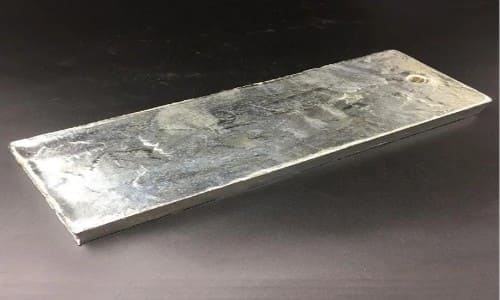• Corrosion resistance:
Tin is a highly corrosion-resistant metal, so tin plating can help to protect the underlying metal from corrosion.
• Lubricity:
Tin has a low coefficient of friction, so tin plating can help to reduce friction and wear.
• Aesthetic appeal:
Tin has a bright, reflective finish, so tin plating can improve the appearance of metal objects.
• Electrical conductivity:
Tin is a good conductor of electricity, so tin plating can be used to improve the electrical conductivity of metal objects.
Types
• Pure tin anodes:
These are made from 100% tin and are the most common type of tin plating anode. They offer the best corrosion resistance and are suitable for a wide range of applications.
• Tin-lead anodes:
These anodes are made from an alloy of tin and lead. They are less expensive than pure tin anodes and can be used in applications where corrosion resistance is not as critical.
• Tin-copper anodes:
These anodes are made from an alloy of tin and copper. They are used in applications where a high-conductivity coating is required.
Factors that affect the performance of tin plating anodes:
• The purity of the tin:
The purity of the tin anode will affect the quality of the tin coating. A higher-purity tin anode will produce a smoother, more uniform coating.
• The size and shape of the anode:
The size and shape of the anode will affect the rate of tin deposition. A larger anode will deposit in at a faster rate than a smaller anode.
• The electrolyte solution:
The electrolyte solution must contain the correct concentration of tin ions. The electrolyte solution must also be free of impurities, such as dirt and oil, which can interfere with the electroplating process.
• The temperature of the electrolyte solution:
The temperature of the electrolyte solution will affect the rate of tin deposition. A higher temperature will cause tin to deposit at a faster rate.
• The current density:
The current density is the amount of current flowing through the electrolyte solution per unit area of the anode. The current density will affect the thickness of the tin coating. A higher current density will produce a thicker coating.
An efficient and flexible approach to applying a thin coating of tin to a metal item is with tin-plating anodes. They are utilized in a variety of industries, including the food and beverage, automotive, and electronics sectors. Supercon is a manufacturer and supplier of plating anodes in Maharashtra, Karnataka, Tamil nadu and Gujarat.
